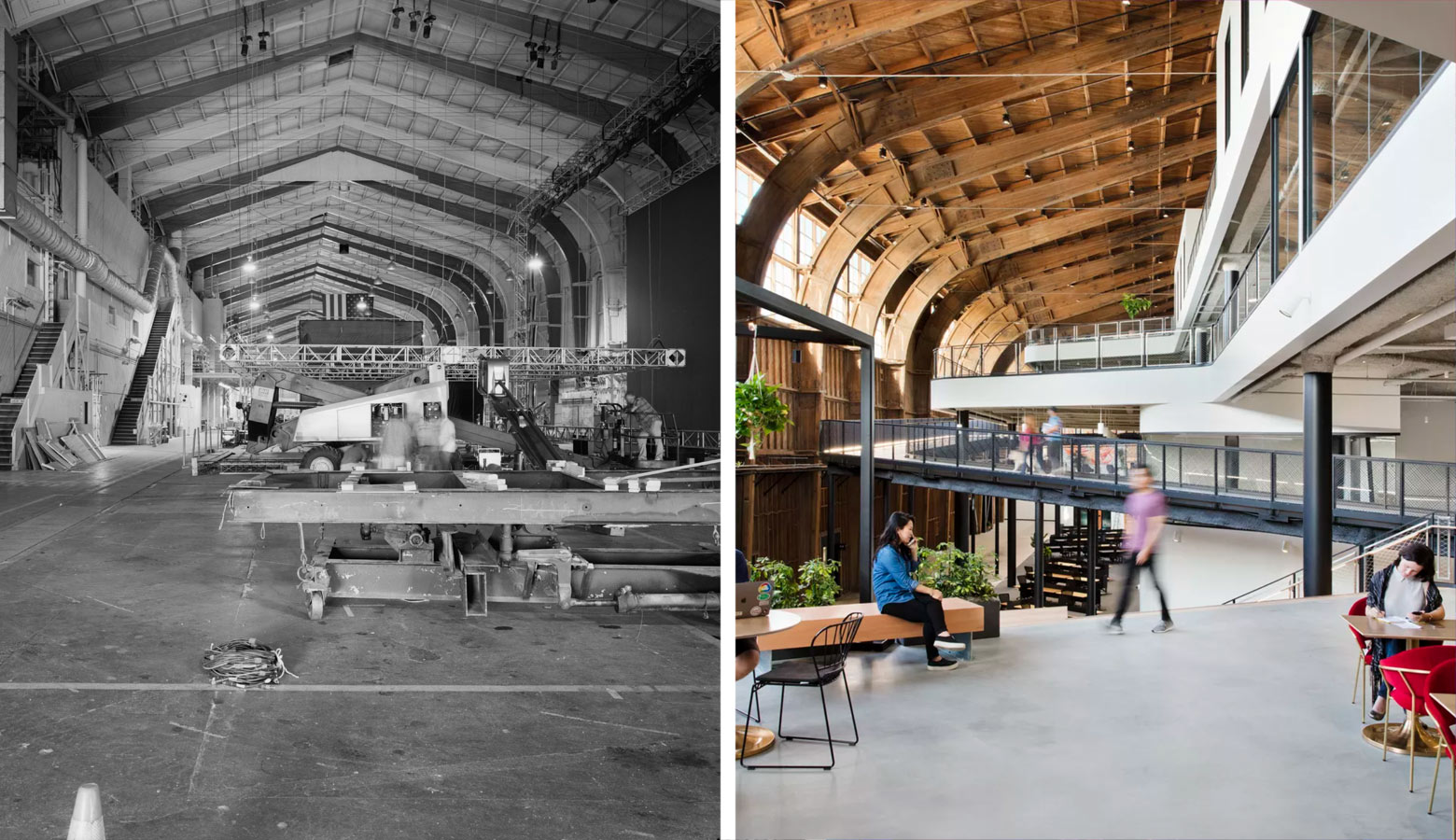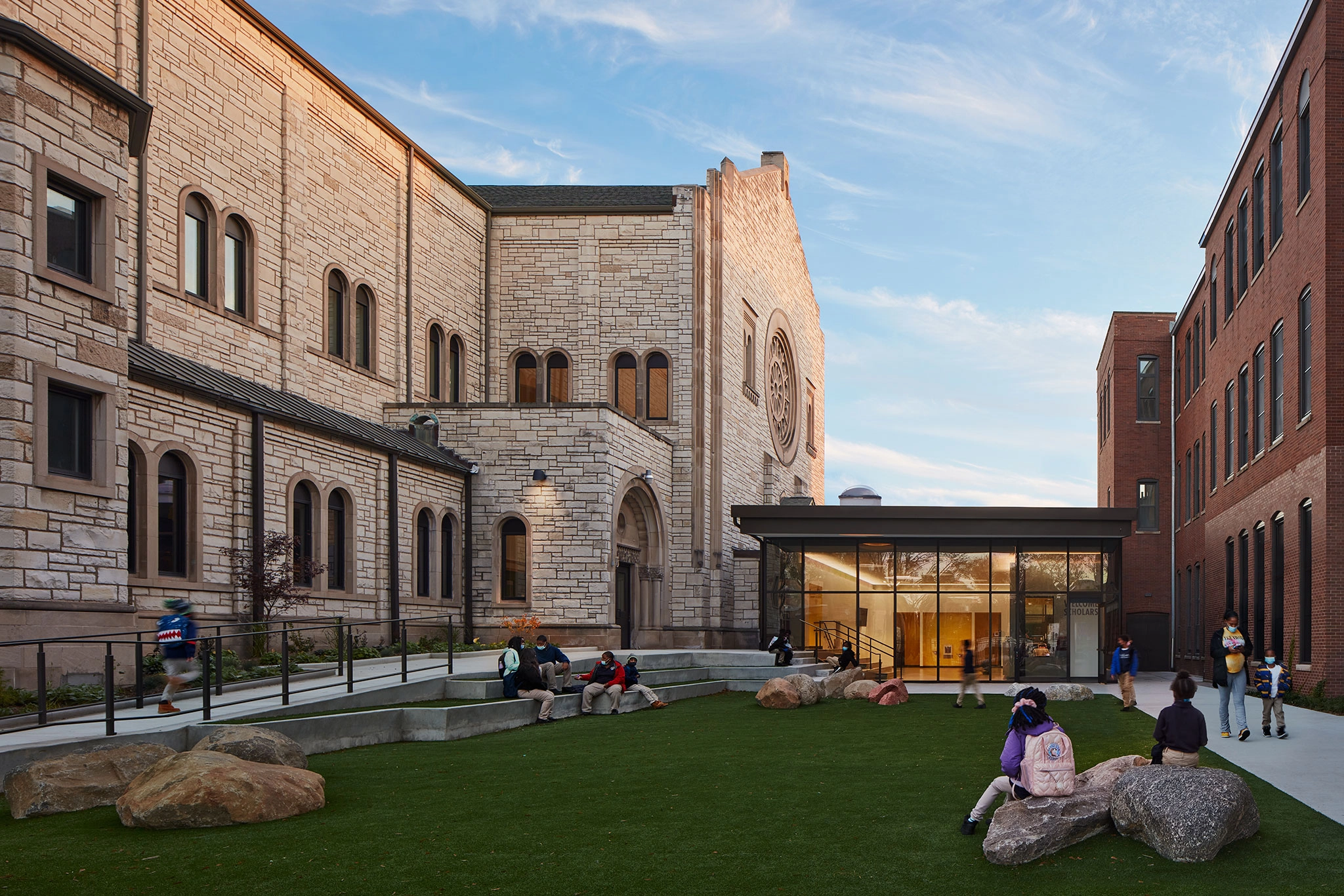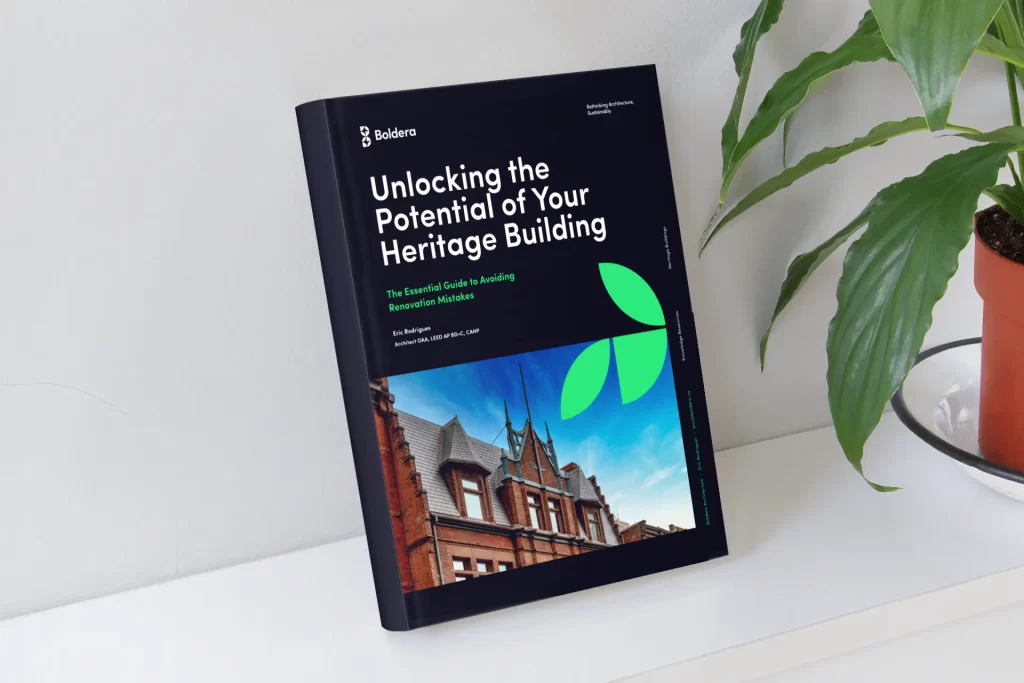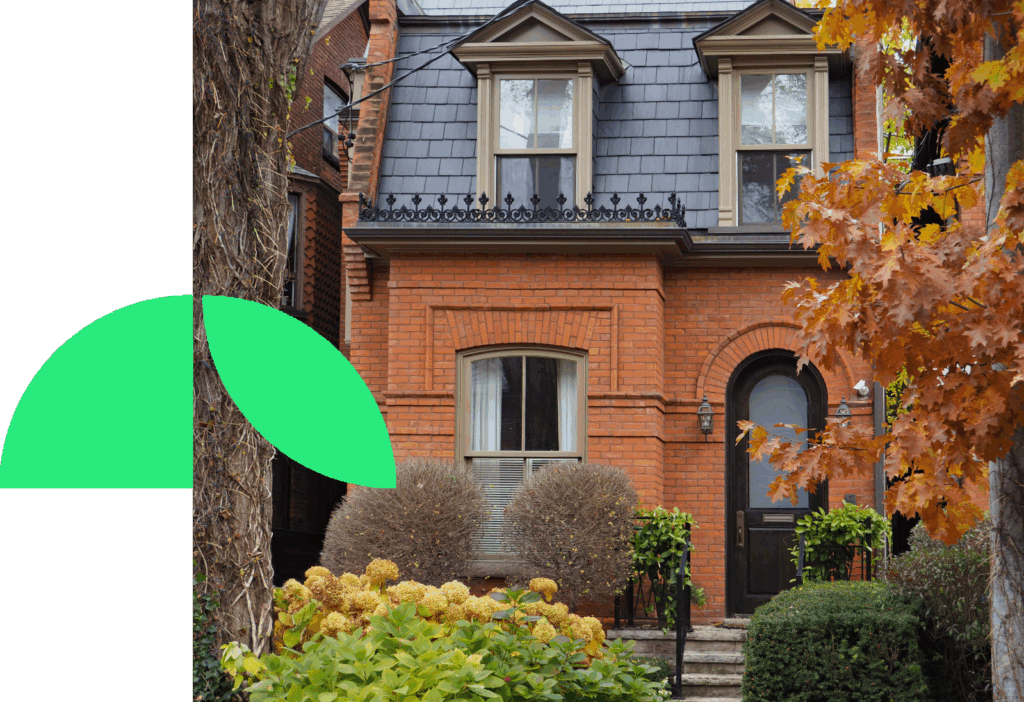Adaptive Reuse: Sustainable Heritage Conservation
Eric Rodrigues, OAA, LEED AP BD+C, CAHP
In the dynamic landscape of sustainable development, the practice of adaptive reuse shines as a beacon for preserving our cultural heritage while addressing contemporary environmental concerns. This article aims to delve into the transformative realm of adaptive reuse, exploring how it intertwines with sustainable heritage conservation to create a harmonious balance between the past and the future.
Understanding Adaptive Reuse
Adaptive reuse involves the repurposing of existing structures for new functions, breathing new life into buildings with historical significance. This sustainable approach not only minimizes environmental impact but also pays homage to the rich cultural tapestry of our communities. It’s a process that goes beyond architectural innovation; it’s a commitment to preserving the stories embedded in our built environment.

Before & After: Example of a conversion of a warehouse into an office building.
The Significance of Heritage Conservation
Heritage conservation is pivotal in safeguarding our cultural identity. By preserving historically significant structures, we maintain a tangible connection to our roots, fostering a sense of continuity and shared history. However, the challenge lies in achieving this without compromising environmental sustainability. Striking a balance between preservation and progress is essential for creating a resilient and sustainable future.
The Synergy of Adaptive Reuse and Sustainable Heritage Conservation
Adaptive reuse emerges as a solution that seamlessly integrates heritage conservation with sustainable practices. By repurposing old structures, we minimize the need for new construction, reducing carbon footprints and the depletion of resources. This synergy between preservation and sustainability is a powerful tool in building a more eco-conscious future. It’s a delicate dance between the old and the new, a testament to our ability to evolve without erasing the traces of our history.
Real-world examples abound where adaptive reuse has successfully combined with heritage conservation. From repurposed industrial spaces to transformed historical landmarks, these projects showcase the potential for sustainable development without sacrificing our architectural legacy. These initiatives not only breathe new life into old structures but also serve as inspiring models for communities looking to balance progress and preservation.
Environmental Benefits
The environmental advantages of adaptive reuse are profound. By utilizing existing structures, we reduce the amount of construction waste, decrease energy consumption, and promote responsible land use. The embodied energy in existing buildings becomes an asset, and the conservation of materials contributes to a more sustainable and resilient urban landscape. In a world grappling with the impacts of climate change, adaptive reuse stands as a practical and impactful solution.

Adaptive Reuse is a great solution to celebrate our history, while returning the to the community with a new use.
Conclusion
In the pursuit of a sustainable future, the marriage of adaptive reuse and heritage conservation emerges as a powerful strategy. By preserving our cultural heritage through thoughtful repurposing, we not only honor the past but also pave the way for a more environmentally conscious and resilient tomorrow.
Adaptive reuse stands as a testament to the idea that sustainable development and cultural preservation can coexist, creating a legacy that spans generations. As we navigate the challenges of the 21st century, let us embrace the transformative power of adaptive reuse to shape a world where our heritage is not only preserved but also actively contributes to a greener and more sustainable planet.
I hope this article has helped you with your planning. If you have questions, book a free 30-minutes Discovery Session with Boldera Architecture. This will unlock the full potential of your project and help you develop a quick action plan. My goal is to help you develop successful projects.






